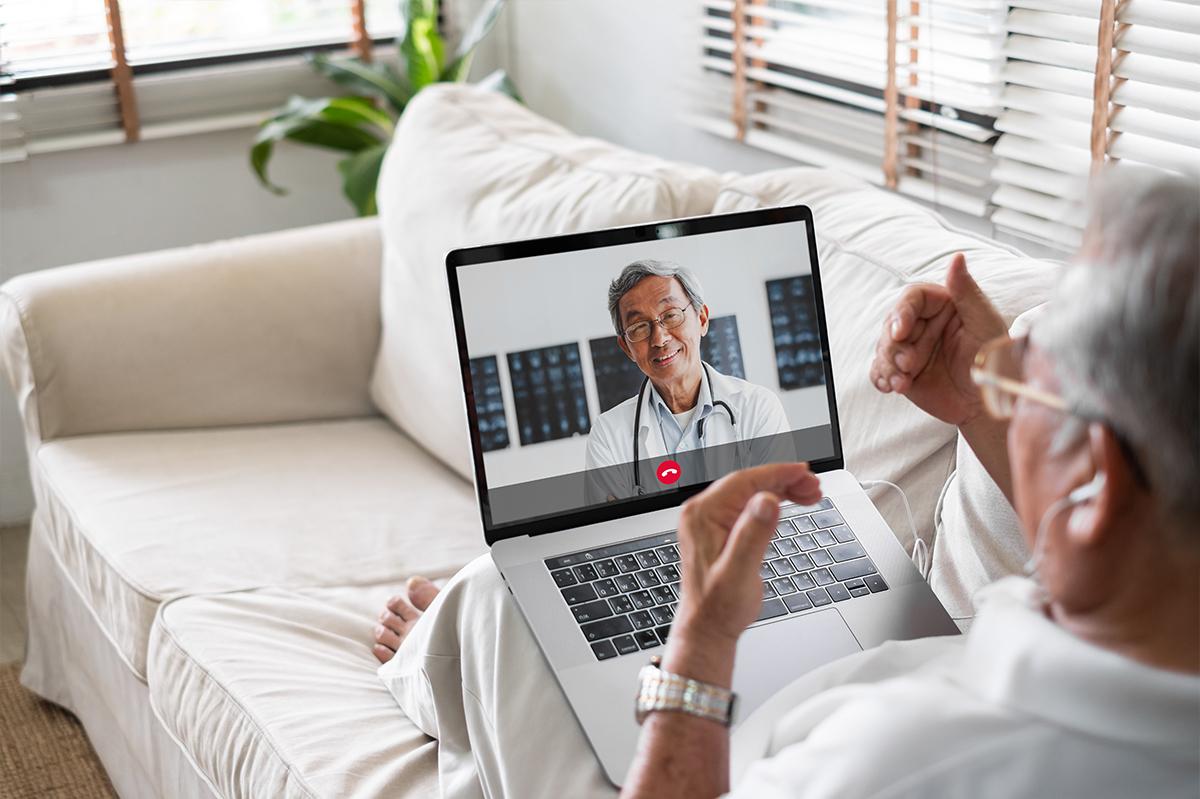Tips to improve your telemedicine skills

Tips to improve your telemedicine skills
Thanks to the COVID-19 pandemic, most of us are no longer novices when it comes to telemedicine. You know how to log on to your portal, turn on your camera and check your microphone. You may have even reviewed the Association of American Medical Colleges (AAMC) 2020 report that listed the eight domains of essential telehealth skills (patient and practice readiness and impact, remote clinical evaluation and care, communication using telehealth, professionalism, information technology, privacy and legal, ethics and patient safety).
But while you may have mastered the technical stuff, seeing patients through a screen still doesn’t come naturally for many clinicians.
Whether you call it your “screenside manner” or your “webside manner,” there are some additional skills needed during a virtual visit that can make your patients feel more comfortable and understood. They include everything from making the video visit feel both personal and professional, getting the correct camera view and wrapping up the call.
Here’s what you can do to improve your patient connections during these visits.
Dress and act professionally
Regardless of where you log on, patients will equate how you’re dressed with the quality of care you deliver. If you typically wear a white coat when meeting patients in person, do the same for virtual visits. Even if you’re a solo practitioner or in a more casual practice that allows you to dress down for work, dress more professionally for a video session. Patients want to know that their clinician was prepared for the interview, not rushing home from the gym.
Acting professionally is just as important. Keep whatever tools you need to conduct the visit within arms’ length. Whether it’s simply paper and pen or more sophisticated equipment so you can physically examine your patient, make sure everything is working before the start of the call and that you know how to use it. Then, review your patient’s chart as you would before walking into a physical examination room.
Finally, make sure that your space is professional. It should be clear of distractions for you and your patient. Avoid a cluttered desk behind you and external noises, like music, the TV or noisy children. You should also consider your lighting – not too dark or too bright. A nice desk lamp near your computer often works well.
Make a personal connection
According to the American Medical Association (AMA), the number one issue clinicians face during a telemedicine visit is making eye contact and connecting with their patients.
In an examination room, you look directly at your patients, making eye contact to let them know you’re listening. But on screen, if the camera is too high, too low or off to the side, you may unknowingly give the impression that your attention is focused elsewhere.
To ensure eye contact with your patient, make sure your camera is at eye level. The best way to determine proper camera placement is to touch your eyes and then move your finger to the screen in a straight and level line. If your fingers don’t hit the camera, adjust the camera or your seating until they do. You can raise or lower your chair, sit on boxes, or reposition yourself and your camera – whatever works best. Once your eyes are level with the camera, remember to look into it (and not your screen) when talking to your patients.
Often, looking into the camera instead of at your patient is uncomfortable. But you don’t want to look uncomfortable. Be conscious of how you sit – crossing your arms can communicate disinterest. Also, consider your tone and how quickly you’re speaking. If you need to relax, smiling can help and make you feel more conversational with your patient.
Beginning and ending the call
As you would during an in-person visit, begin the call by introducing yourself if necessary and asking questions about the reason for their visit. Before you end the call, summarize what you discussed, review their next steps and leave time for any additional questions. Make sure you are both on the same page before ending the call. And if the patient needs a follow-up appointment, let them know how to schedule their next visit.
It’s a good idea to ask a friend or family member to help you run through a practice appointment. With their feedback, you can make adjustments and feel more comfortable during your first telemedicine visits.
Start earning extra income today
Contributing to the All Global Circle panel offers extra income and an opportunity to advance your medical field, all in exchange for a small portion of your day. You can access a $50 bonus (or the equivalent in your country’s currency) just for registering and completing the All Global Circle validation process. And remember, you’ll get this signup bonus regardless of whether you qualify for a study. Sign up today.